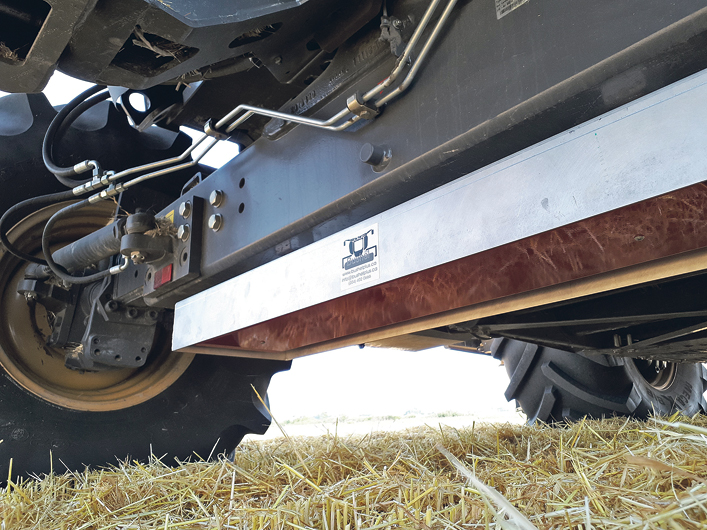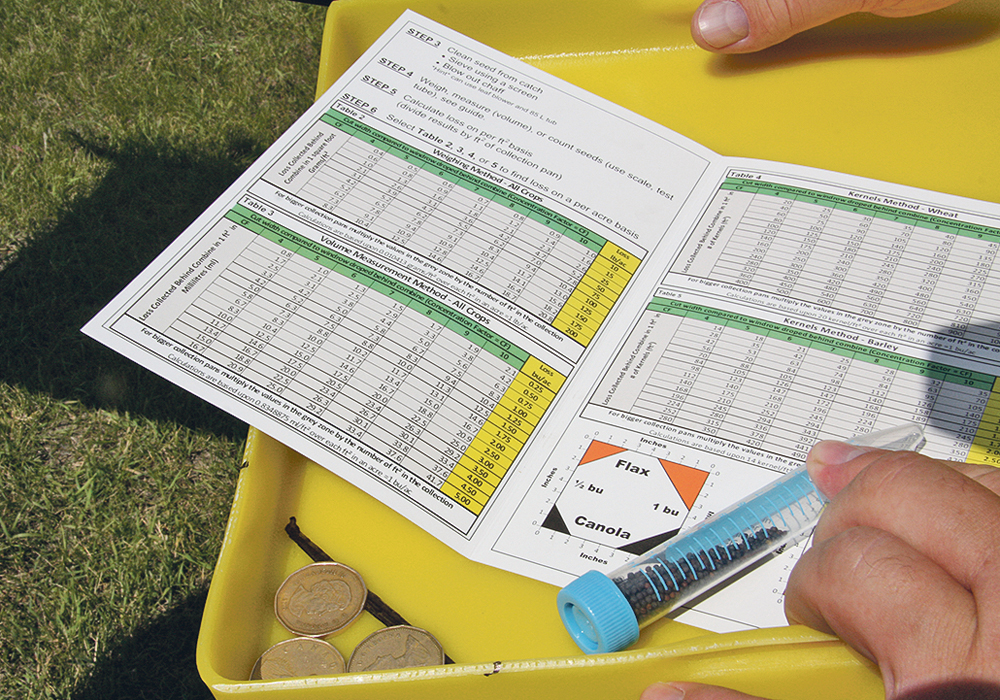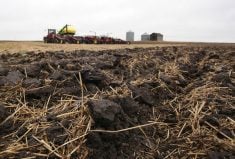A 2013 survey of canola losses at harvest showed a range from two to eight percent, according to Canola Council of Canada agronomy specialist Angela Brackenreed.
A 2014 study had an even higher number. It estimated losses of up to 10 percent.
That’s a lot of money left on the ground.
It’s true that canola seed losses are inherent, said Brackenreed. Given seed size, some is likely to be lost even when using best practices.
“We know these losses are going to happen. We can’t stop it, but what we can control is losses out the back of the combine, and these losses, threshing losses, really can make up the most substantial portion of the total losses that we see in canola,” she said.
There is no reliable survey of threshing losses on the Prairies, but two to three bushels per acre is thought to be fairly common, Brackenreed told those at a recent Alberta Canola Growers Commission event in Lethbridge.

Among the reasons are that canola yields are higher than ever and combine horsepower has doubled since 1990.
“Canola is a very easy threshing crop. We do not need that amount of horsepower to optimally harvest and thresh our canola…. It needs kind of dialing back on the throttle a little bit,” said Brackenreed.
“We need to think of capacity more as feed rate at a specified loss level, and a specified loss level that we’ve targeted for a lot of years is two to three percent of yield.”
As well, improved combine choppers and spreaders can disguise the amount of loss.
Producers should find a way to measure and quantify canola losses at harvest and explore ways to reduce them.
Read Also

Russian wheat exports start to pick up the pace
Russia has had a slow start for its 2025-26 wheat export program, but the pace is starting to pick up and that is a bearish factor for prices.
She suggested there might be an over-reliance on loss monitors as operators sit in their combines.
“Our combines are getting pretty comfortable,” she said. “The loss monitors, they’re nice to watch. We’ve got lots of things going on…. It’s not really super fun to get out and get dusty and actually check. But these loss monitors are really useless if they’re not calibrated.”
She urged farmers to re-calibrate according to the crop and the changing conditions, and also to adjust speed given today’s wider headers and heavier yields.
“We can’t accept no losses. It’s just not going to happen … but there’s a sweet spot where we can have efficiency but also acceptable losses,” she said.
Somewhat surprisingly, the 2014 study showed that losses in swathed and straight-cut canola crops were about the same, even though shatter-tolerant varieties were not being used at that time.
Since then, shatter tolerance has become a game changer for straight cutting the crop and is the biggest factor in degree of loss, Brackenreed said.
However, it doesn’t make the crop bulletproof. Timing is more crucial when straight cutting so it can actually delay or prolong harvest.
Stem dry-down will never be the same in a straight-cut crop compared to a swathed one, so pod dry-down as opposed to stem dry-down has to be the goal if straight cutting.
Brackenreed said pre-harvest aids are not a necessity but can help producers manage harvest timing when planning to straight cut. Reglone and Heat are common options but timing between application and harvest is critical and dependent on weather and harvest conditions.
















